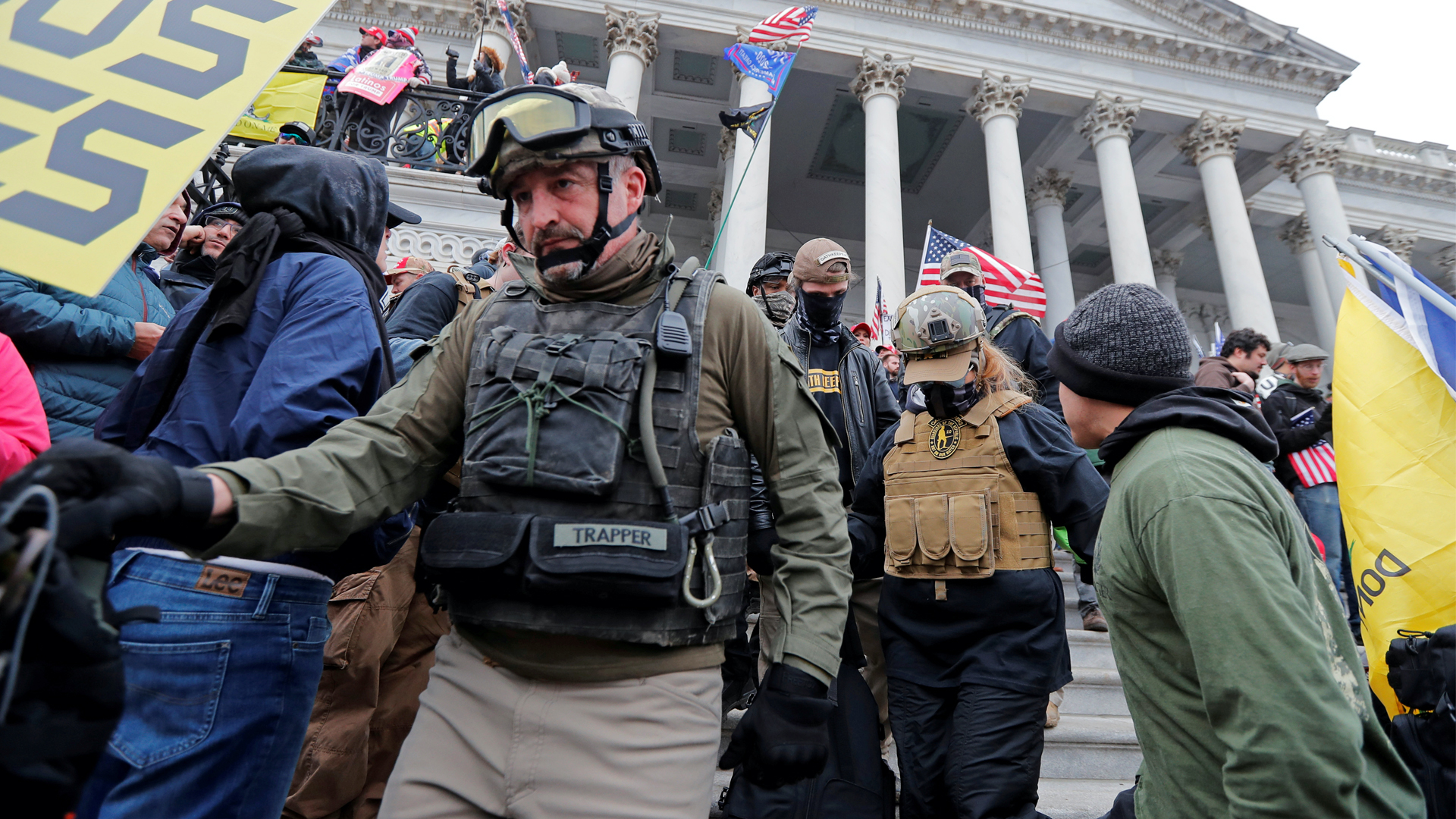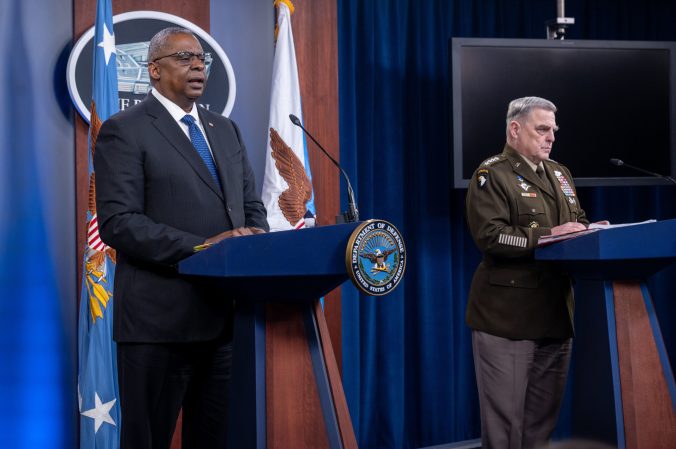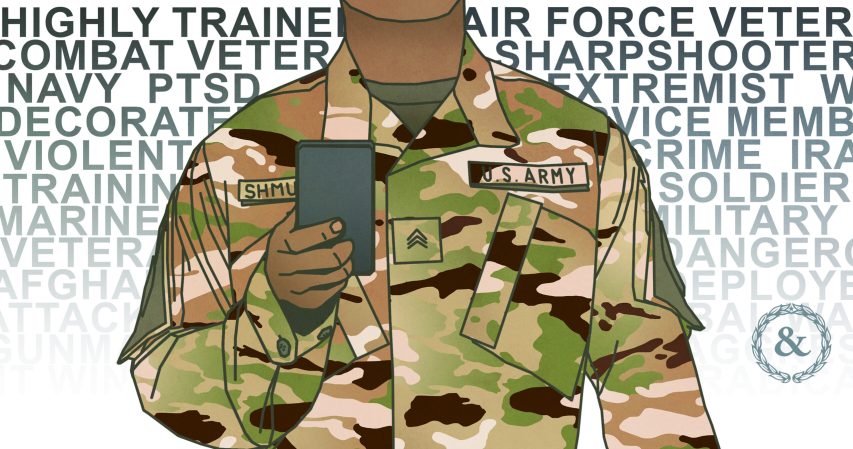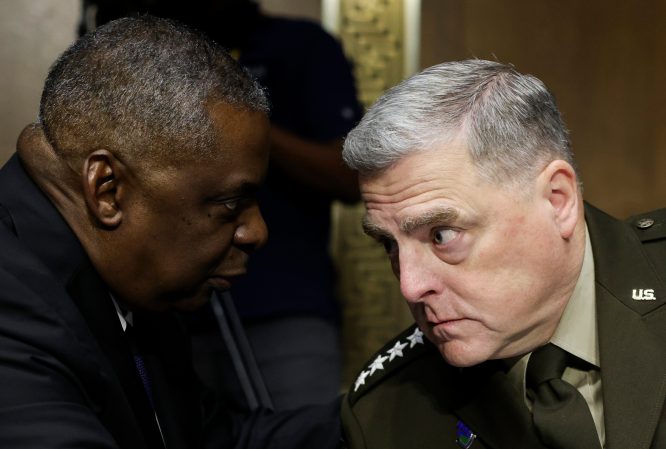More than a year and a half after it was due, the Department of Defense finally released its report examining extremism within the ranks of the armed forces. And although there is “no evidence” that violent extremism is “disproportionate” in the military compared to the wider American populace, it remains an issue with active-duty troops and veterans. However even after extensive study, there is still confusion and unclear policies throughout the military when it comes to finding and dealing with extremism.
The report, commissioned by the Pentagon and conducted by the think tank the Institute for Defense Analysis, found that the military needs to have a comprehensive change in its culture to both better identify current extremists and to prevent troops and DoD civilian employees from becoming radicalized. The IDA’s review found no evidence “that the number of violent extremists in the military is disproportionate to the number of violent extremists in the United States as a whole, although there is some indication that the rate of participation by former service members is slightly higher and may be growing. IDA also found no evidence of violent extremist behavior by DOD civilians.”
Titled ”Prohibited Extremist Activities In the U.S. Department of Defense,” the report noted that despite there not being a disproportionate amount of extremism within the military, there is a potentially growing rate of veterans participating in extremism groups or activities. Those include participation in what it outlined as the four main types of extremist views: left- and right-wing extremism, single-issue extremism and politico-religious extremism.
The Institute for Defense Analysis was supposed to finish its report by June 2022 but still had not completed it by summer 2023, according to reports by CNN. The 262-page report was only released this week, in the time between Christmas Day and New Year’s Eve.
The IDA report was commissioned by Secretary of Defense Lloyd Austin in response to the insurrection at the U.S. Capitol on Jan. 6, 2021. The study was one of several moves taken by the Department of Defense in the wake of that attack; other moves included a standdown to address the issue within the military, as well as other measures to better screen recruits for such views.
The IDA’s team interviewed more than 100 DoD officials and others, visited bases belonging to different branches and studied internal reports from the armed forces. This research was done between June 2021-June 2022. The researchers found that issues including social media can be a pathway to increasingly extreme views, while for veterans, a “loss of military identity appears to have a strong association with difficult adjustments to civilian life that can in turn contribute to negative behaviors.”
Subscribe to Task & Purpose Today. Get the latest military news and culture in your inbox daily.
However, as with past studies, the IDA’s report found that there are inconsistent methods of data collection and reporting across the military, with each service branch having their own approaches. Another problem outlined by the IDA is that there is no clear, Department of Defense-wide definition for what constitutes extremist ideology or activity. That in turn makes it harder to collect data, as well as come up with clear courses of action to stop extremism.
“Until these policies are appropriately updated, they are likely to contribute to continued confusion over the scope of prohibited activities,” the report said.
The IDA report, again conducted between June 2021-June 2022, doesn’t reflect the most recent data from the last year. However, a DoD Inspector General’s report, the “Annual Report to Congress Pursuant to FY 2021 NDAA, Section 544,” released at the end of November, offers more recent information. According to the Inspector General, the Pentagon investigated 183 different allegations of military members engaging in or advocating for extremist action in the 2023 fiscal year. That included 44 alleged cases of “Advocating, engaging in, or supporting
terrorism within the United States or abroad” and 78 alleged instances of people “Advocating for, engaging in, or supporting the overthrow of the U.S. Government.” However, as with the IDA report, different branches of the military reported their own individual challenges in collecting data, compiling it into a single report and other issues, meaning there is still a lack of clarity and unified reporting systems when it comes to extremism.
Ongoing threats of extremism
Extremism in the military has been an issue before the Jan. 6, 2021 insurrection and continues to be one. Groups often try to recruit veterans for their military experience or have members join the armed forces to learn those skills. As the IDA noted, “participation in violent extremist activities of even a small number of individuals with military connections and military training, however, could present a risk to the military and to the country as a whole.”
In recent years there have been several instances of attempted or successful violent actions by members of the military. One Army soldier tied to a Satanic Neo-Nazi group planned to ambush his unit while deployed. An Air Force sergeant shot and killed a federal agent and later a local law enforcement officer in 2020 in an attempt to start a second American civil war. Meanwhile there are also many cases involving veterans. One group, involving at the time active-duty Marines and a National Guardsman all linked to Neo Nazis, was caught after an attack on an electrical substation and while planning a similar terrorist attack. These attacks on electrical substations in attempts to disrupt or cripple the American power grid have become increasingly common among right-wing extremist groups.
However, the IDA noted that violent extremism “does not appear to be any more prevalent among service members than it is in American society as a whole,” based on the admittedly uneven data it studied.
Recommendations and push back
The IDA’s report outlines several recommendations to counter extremism. The first is standardizing language and collection policies when it comes to what constitutes extremist activity. Clear, department-wide definitions can avoid confusion and make it easier for units and officials to point out cases, and collect data. Additionally, the security clearance process needs to be updated to better understand and protect against domestic extremist views, rather than outside threats from what the IDA called “Cold War threats.”
One common refrain was focusing on intervention and deradicalization rather than punitive measures. The Department of Defense, the IDA said, should “avoid steps that risk unnecessary polarization or division in the ranks.” Although the threat of extremism is serious, there is a risk that a harsh crackdown instead of interventions with the intent of deradicalizing troops could potentially cause a wider backlash.
“DOD has used a wide variety of terms, phrases, and concepts to describe prohibited extremist behaviors and activities. As a result, service members at all levels told the IDA team that they are unaware of or confused about existing definitions and standards,” the report read. “In the absence of a clear and consistent message, there is a risk that misinterpretations could lead to a significant division in the force along political and ideological lines, with some members of the military believing that they are being targeted for their views.”
The IDA report is not the first set of proposals for addressing extremism in the military. The Pentagon’s Countering Extremism Working Group, formed in April 2021 after the Capitol insurrection, released a series of six recommendations on how to address the problem. Like the IDA study, they focused on clarity of language for what constitutes extremism, and also recommended better screening processes for recruits. However in May, Pentagon Deputy Press Secretary Sabrina Singh told reporters that so far only the policy on educating recruits on what constitutes extremist views and activity had been put into effect. CNN reported that political backlash from Congress had stalled the sense of urgency.
The latest on Task & Purpose
- MARSOC, Navy SEALs, and Army Rangers: SOF by the numbers
- Marine veteran killed in Ukraine fought 12 Russians in last stand
- Sensitive documents showed up on War Thunder forums. Again.
- Army Combat Uniform’s insect repellent at center of fraud case
- U.S. Marine vet in Ukraine repulsed Russian attack in final moments








